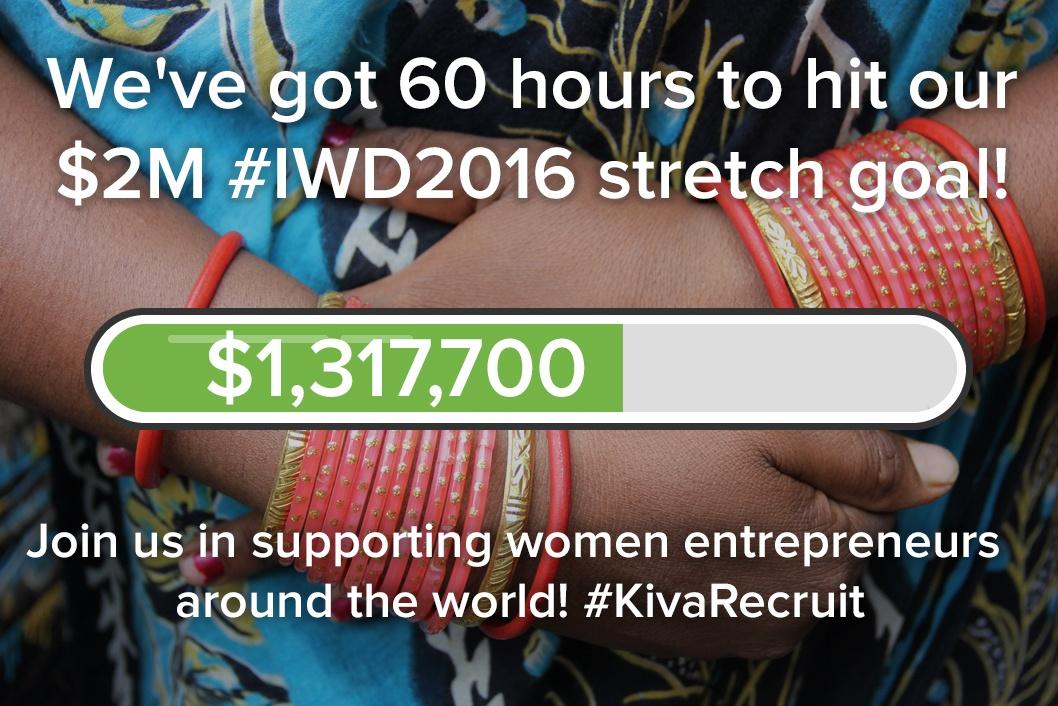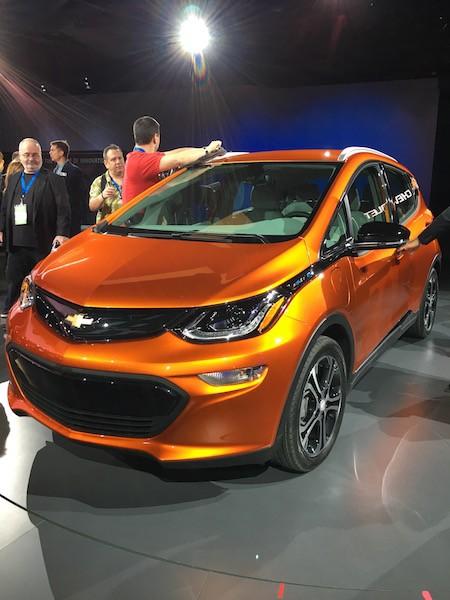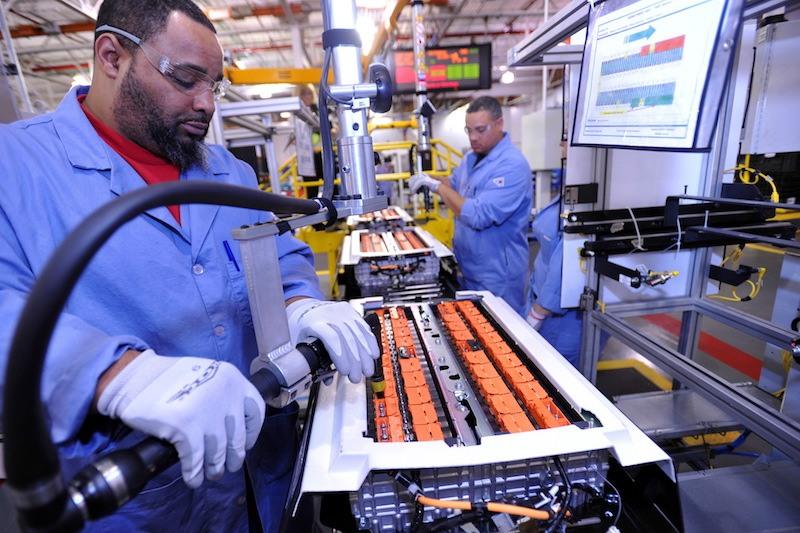Why the World Should Celebrate Women Every Day


By Teresa Fogelberg
March 8, International Women’s Day, is a festive day in many parts of the world. In Africa and Asia, female employees get a day off. They receive flowers as a token of recognition for their role in the economy. Not so in Western Europe. In Amsterdam, where I am based, Women’s Day is either completely ignored by media and public opinion, or made slightly ridiculous. "Who needs a special day? We don’t need that: Our women have no problems. The era of feminism is so past century."
As an anthropologist I was trained by famous scholars like Margaret Mead, that the relationships between men and women form a universal societal and economic ordering principle. However diverse these gender relations are from society to society, they contain a fundamental element of asymmetry of power, to the disadvantage of girls and women, throughout history and in all societies, until today.
Thanks to Eleanor Roosevelt, who 70 years ago included discrimination on the basis of sex into the Universal Declaration of Human Rights, the world embarked upon a long journey to improve women’s lives and to fight global gender inequality. The first 25 years of my international career at the U.N. and the Netherlands Ministry of Foreign Affairs were dedicated to that struggle.
During those years I learned three things.
1. There is progress but still heartbreaking disappointment
The women of the world are still very far from “the full enjoyment of all human rights and the fundamental freedoms throughout their life cycle” (U.N. Conference in Beijing, 1995).
The modest improvements over the past decades, such as in life expectancy, level of education and reproductive health, have been outweighed by newly unveiled atrocities and abuses of women.
Today, there are 60 million more men than women in the world. Globally, women earn approximately 77 percent of what men earn, according to the International Labor Organization. Around a third of women worldwide experience physical and/or sexual violence at some point in their lives. Intimate partner violence is the most common form of violence, in both developed and developing countries (PDF).
Harassment and sexual exploitation on the work floor are systemic. Many armed conflicts bring women in as part of the cause, and violence against women is often used as a weapon.
This should be No. 1 on the political agenda. It is not.
2. Women are incredibly strong and resilient
During my years in Africa, I learned how strong women are. I spent eight years in West Africa and the Sahel, in many activities for the U.N. Amongst others, I supported an inspiring director of Women’s Empowerment, in the Islamic Republic of Mauritania, and her all-female team, raising awareness and training women’s groups across this vast desert country in a period of heavy famine. I also gave support to women in large agriculture schemes and food security policy.
From all of them I learned that women do not only need a room of their own, as Virginia Woolf stated. They also need their own income and financial independence in order to invest in themselves and their children.
That’s what the women in Ghana, Mali and the Islamic Republic of Mauritania taught me. However poor they were, they would strive for some kind of income for themselves. And figures show that women in these circumstances invest 90 percent of their income into their families or communities.
3. Data serves as a liberator of women
I love statistics. Women need to be made visible through data and have access to decision-making bodies to enable change. Data, goals and indicators have served to unveil hidden discrimination and denial by political and corporate leaders.
I truly believe that the inclusion of specific goals for women and girls in the U.N. Millennium Development Goals and now in the Sustainable Development Goals (SDGs), as well as indicators, have helped. In the SDGs, there is a stand-alone goal on gender equality and the empowerment of girls and women (SDG 5), as well as gender targets embedded within the other SDGs.
Today we can find a wealth of data on the position of girls and women from sources like The World’s Women, Trends and Statistics, by U.N. Statistics. That’s my favorite as well as the annual World Bank data book as well as the Progress of the World’s Women by UN Women.
Another encouraging trend is corporate reporting. GRI Standards provide guidance for companies across the world to measure gender policy, performance and impact by the corporate sector with 16 indicators on gender woven throughout GRI’s G4 Guidelines. This includes a range of topics like (equal) pay, right to organize, anti-harassment, maternity and parental facilities, training, diversity of boards, and many others.
The result is more than 30,000 reports on GRI’s Sustainability Disclosure Database from over 90 countries with 53 percent of G4 reporters disclosing information on economic inclusion*.
But more reporting on gender equality is needed to close the gap so that organizations can understand their impacts and take action. This type of corporate reporting on gender is not only fast growing across the world, but it is also becoming mandatory. In 2014 the EU made it mandatory for some 6,000 large companies to report on human rights and gender, as well as gender diversity on the boards of companies. This information has the power to change the lives of women all around the world.
What will I do today? I can’t give my employees a day off. But I will bring flowers to my colleagues, whether male or female, to celebrate the special women in their lives and our shared goal of gender equality. Some might think this is old fashioned, but I feel that -- now more than ever -- we need to reconnect with the learnings of the past to find ways to break the deadlock for a more equitable future. Men and women around the world all have a role to play.
*The data included here is based on GRI’s Sustainability Disclosure Database as of 1 March 2016. The data available in the database is collected by GRI in collaboration with its data partners and captures all reports of which GRI is aware.
Image credit: Flickr/U.K. Department for International Development
Teresa Fogelberg is Deputy Chief Executive of the Global Reporting Initiative (GRI).
Net-Zero Model Home Improves Energy Efficiency


How would you like the power company to pay you instead of a sending you a bill? That could be a reality if you lived in a so-called net-zero house that produces its own power while sipping energy like a miser. The overall concept is that the residence uses no more energy than it creates.
The state-of-the-art, net-zero house that serves as an energy-conservation laboratory in Maryland has reportedly become so efficient that it quadrupled its energy surplus in its second full year of experimentation.
This is the latest in bragging rights from creators at the National Institute of Standards and Technology or NIST. Instead of being inhabited by a living family, the model home is programmed to simulate the effect a family has via daily living, from how many times light switches are turned on and off to typical humidity levels. The simulated family is allowed all of the modern comforts of a typical family, from comfortable indoor temperatures to technology-based entertainment.
The four-bedroom home has its own rooftop solar grid along with several smart-design features that help it meet LEED Platinum standards from the U.S. Green Building Council. The traditional-looking, two-story house has 2,700 square feet of living space. In Maryland, that size house would typically incur an annual power bill of over $3,500. Instead, the photovoltaic panels atop the roof generate enough power for this home to run, plus a small surplus of power that could be returned to the central power grid. The project reported a surplus of 1,655 annual kilowatt-hours over the previous test year. In a year's time, the rooftop PV system generated more than 13,700 kilowatt-hours of electricity.
While the solar rooftop may look like the most impressive feature of the net-zero home, it's not the primary means of making it a standard bearer. Senior research scientist A. Hunter Fanney explained: "If all the solar panels were taken off the [home], it would still use 60 percent less energy than homes currently built to code." In other words, energy efficiency itself is the main strength.
For second-year improvements, tweaks to the home's heating system greatly improved efficiency without sacrificing comfort, Fanney said. Another savings came from reducing the outdoor ventilation rate.
TriplePundit asked Fanney to explain how practical the model house would be for the typical family. As for the ability to construct it, he told us the home could be replicated because the technology being used is off-the-shelf and readily available. However, cost-effectiveness could be a challenge for many people, since the house includes features that put it at approximately $250 per square foot of living area. "Compared to an identical house that would meet the 2015 International Energy Conservation Code, it costs approximately $120,000 more."
This model home report comes as various industry standards are moving toward net-zero homes being more readily available on the market and this being the new construction standard by approximately 2030. Demonstration projects like this are showing what can be done with houses that need not depend on a power grid. However, current policies of many utilities and the communities they serve can often be prohibitive to homeowners. For instance, the incentives for homeowners to create their own solar power in the state of Nevada was recently undermined by a policy change.
We asked LEED fellow, architect and author Eric Corey Freed to weigh-in on what this model home means for the green building industry. He responded: "The key to solving the challenge of climate change lies in fixing our buildings and transforming all of them to be net-zero energy. Not only will this slash our carbon emissions, but will save building and homeowners billions in energy costs.
"The [Maryland test-house] shows us how the key to achieving net-zero is in building an efficient building (with a tiny base load) in the first place. My hope is this model will serve as a catalyst for the industry to develop new financial models and incentives for existing building owners to retrofit and upgrade their buildings."
We asked NIST's top scientist how the average homeowner can save energy even without a new home, and Fanney offered these tips, in order of cost-effectiveness:
- Conservation -- sealing of cracks/openings to prevent unwanted air from leaking into or from the house, followed by increasing the amount of thermal insulation in the exterior walls/ceiling of the structure.
- More efficient heating/cooling and water-heating equipment and appliances.
- Addition of renewables in the form of photovoltaic panels or a solar hot-water system.
You can take a look at the model net-zero home here and get some construction or renovation tips for yourself.
Image courtesy of the National Institute of Standards and Technology
Kiva Hopes to Raise $2M for Women Entrepreneurs By Midnight


Kiva, the microfinance nonprofit that connects individual lenders to entrepreneurs seeking loans in order to break of poverty, has largely been a success story since its launch in 2005. According to Kiva’s statistics, over $820 million in small loans from almost 1.4 million people have been distributed to borrowers in 84 countries — with a repayment rate of over 98 percent.
Kiva’s model is relatively simple. Visitors to its site can contribute as little as $25 for loans after vetting hundreds of potential borrowers. Kiva, meanwhile, coordinates with almost 300 various partners to vet those in need of loans. Lenders receive updates and can view those loans being paid incrementally to his or her Kiva account. At the end of the loan cycle, the lender will receive his or her money back, or can opt to let that amount be loaned to another borrower.
To mark this year’s International Women’s Day, Kiva recently set a goal to procure $1 million in total loans for women entrepreneurs. The campaign has been so successful that the total reached well over $1.3 million at press time. So, Kiva has extended the campaign to midnight tonight with a goal of $2 million.
For Kiva, the decision to focus on women is a simple one to make. According to the International Labor Office, at least 70 percent of the world’s poor are women. Yet because many of them make up what is often called the “informal economy,” they often lack access to financial services, including access to credit.
A quick summary of Kiva’s demographics show how this organization is trying to meet those demands in the world of social enterprise. Women are in search of loans on Kiva’s site by men by over a ratio of 2 to 1. And the vast majority of those seeking loans work within the food and agriculture sectors. The needs, however, run all over the map, from a woman in Lebanon seeking a loan to pay for her children’s education, to a collective in Paraguay that employs women who support their families through work on sewing projects.
Kiva’s track record of accomplishments is in part due to the fact that its business model is flexible and it has demonstrated a willingness to work with various partners around the world to introduce women to the world of finance.
The NGO partnered with Fair Trade USA to establish a micro-loan program for coffee farmers, which has allowed them to borrow funds for projects including farm maintenance, renovation or to purchase fertilizer. Kiva has also partnered with Intuit in order to fund small business loan opportunities here in the U.S. and abroad.
For those of us who are more fortunate and are interested in impact investing, but have no idea where to start, NGOs such as Kiva are a way to get those toes wet.
Image credit: Kiva
Boxed-Wine Marketers Strive for Leadership in Sustainable Packaging


Boxed wines are on the come-up. Their convenience, lower cost and acceptable – if not award-winning – taste are making them a mainstream option throughout more of the U.S. So, leading marketers are trying to further distinguish their offerings with sustainable packaging that appeals to discriminating buyers.
The race is on for leading boxed-wine marketers to build market share, because it’s still a relatively wide open field: An estimated 6 out of every 10 wine consumers have yet to even try a premium boxed wine, said Mark Koppen, vice president of brands at Delicato Family Vineyards in Manteca, California, which sells Bota Box wines.
Bota Box and Black Box, of Madera, California, are among the leading and most creative marketers. Together, they control about 80 percent of the market, according to Koppen, and have survived intermittent industry shakeouts.
If you’ve never tried a boxed wine, it’s an education when you parse companies' claims on how truly sustainable they are. We’re talking about packages that are fully recyclable, require far less energy to manufacture and transport, and produce about half the carbon emissions of bottled wines. Much of these gains are on a volume basis when considering that typical 3-liter boxes contain the same amount of wine found in three traditionally-sized bottles.
If the wine is this good tasting, and that’s always a subjective call, what’s keeping this industry segment from growing? Part of the answer, from interviews with several avid wine drinkers, is the expectation that a good wine cannot come in a box.
Note how both Bota Box and Black Box say they sell “premium,” or even “super premium, appellation-specific, vintage-dated” wines. Black Box says it has 27 “Best Buys” from Wine Enthusiast and 50 “Gold Medals” from wine tasting competition.
Some relevant background: Wines in boxes actually come in a bag inside the box (BIB). They’ve been found somewhere in the world for almost 50 years. It was in 1967 when when Australian inventor Charles Malpas and Penfolds Wines patented a plastic, air-tight, tap and welded it to a metallized bladder, or bag, for storing wines in a box.
Only since the early 2000s have boxed wines made significant inroads in the U.S. In fact, the $19.99 price-point for a 3-liter box is a threshold many vintners apparently dare not go above.
But expectations about wines in a box may be shifting, especially among millennials.
In its marketing, Bota invites consumers to “take us along on their everyday life’s adventures” with the tagline, “Here’s to Your Next Adventure.” To grow its appeal and credibility of sustainability and other claims, Bota recruits photos of wherever consumers are enjoying its wines.
“We’re seeing the premium [boxed wine] segment grow four-to-five times the overall growth of the wine category,” Koppen said.
“The take-along and freshness aspects of the package appeal to a broad range of ages,” Koppen said. He asserted baby boomers are discovering that very good wine can stay fresh and come in a box. “Millennials are very open to new types of wine packaging, based on convenience, ease of opening and usage occasion.”
Consumers who buy boxed wines also buy premium bottled wines and “use the different packages based on the occasion,” Koppen added. Consumers “not only appreciate quality wine at a great price, but they live every day as an adventure and treat the earth with respect."
For wine drinkers who don’t want the equivalent of three bottles of wine, Bota is trying to appeal to 1.5-liter glass buyers with a Bota “Brick” box at that size.
What about BIB wines served in restaurants? Koppen said the focus is on offering BIB options as “house wines” both to meet a certain expectation and prevent spoilage which can be an issue with bottled wines. “On-premise business is small now, but we have seen growth the past three years,” Koppen said.
He was quick to outline the rest of the company’s sustainability value proposition:
- Bag-In-Box wines create 85 percent less landfill waste than traditional glass bottles.
- Boxes are printed on recycled paper containing 90 percent post-consumer fiber.
- Graphics are printed directly on Kraft paper which doesn’t need to be bleached as white paper does
- Paper layers are bonded together with cornstarch instead of glue.
- Bota’s 3L boxes result in a smaller carbon footprint compared to glass: 35 percent lighter on average and 44 percent smaller in size than a four-glass (750 ml) bottle.
- Bota’s Mini 500 ml “Tetra Paks” are made from wood fiber sourced from “responsibly managed forests” certified to the highest standards currently set by the Forest Stewardship Council.
- The wine bag is BPA-free; both it and the spout are Category 7 recyclables.
Bota also works with the Arbor Day Foundation in support of reforestation. 2016 is the eighth consecutive year the two will have worked together, planting about 150,000 trees to date. During this year’s Earth Day, April 22, they hope to plant an additional 50,000 trees across the U.S.
Image courtesy of the author
3 Ways to Travel Sustainably


By Daphne Stanford
What does it mean to travel sustainably? Beyond government and civic initiatives such as the Paris Agreement and tax rebates for green retrofitting, how can we, as individuals, give back to the planet while traveling — an activity that is reserved for the privileged, developed world? The “three pillars” of sustainability — environmental, economic and social — are commonly referenced when discussing sustainable travel. So, that’s a start.
However, today’s climate crisis has necessitated a solution beyond the 1970s vision of sustainability that “involved things such as organic farming and solar panels on homes. That still might be how many people picture sustainability today. But those solutions are no longer enough,” futurist Alex Steffen told Fast Company.
Instead, Fast Co.Exist staffer Adele Peters suggests one solution may eventually involve the abandonment of the personal car model that we all adopted as a carryover of a 1950s American vision that is outdated and utopian in nature. Because if we all keep driving our own vehicles around, the environment may not have a chance to recover from the brink.
So, without further ado, here are three ideas on how to support sustainability through travel.
1. Demonstrate sustainable values and behave respectfully while traveling
Ultimately, sustainable tourism boils down to respect: respect for local people who live in the place you’re visiting, acknowledgement of their economic needs, and awareness of the ecosystem in which they live, where you are a temporary guest and an outsider.As such, you should act as if you are a guest in somebody’s home: You should make an effort to observe their customs and traditions, and you should be respectful of local customs and taboos. In order to accomplish this camouflage-effect, it will probably help to do some research on the specific location you plan to visit in order to more fully understand the ins and outs of the culture.
Moreover, once you’re on the ground, make an effort to get out of your hotel or hostel room and get to know the neighborhood where you’re staying. Don’t fall prey to the temptation of staying in and ordering room service. Mingling with the locals will give you a chance to practice your language skills, and it also shows that you regard the people who live in that location as human beings and individuals, rather than anonymous subjects to be photographed and shared via social media. Making an effort to ditch the guidebooks, at least for a day, will make for a more spontaneous and exciting adventure. You may also make some new friends, in the process.
2. Seek out sustainable travel destinations and activities
Yes, some locations are more eco-friendly than others! This means there is an abundance of carbon-neutral hotels and accommodation spots for tourists, as well as eco-friendly activities.It may be surprising to realize that your financial support can really make an impact in contributing to the economy and well-being of the people in certain regions who rely on income from tourism to support their livelihood. Matador Network compiled a list of 10 ethical travel spots for 2016, and the Global Sustainable Tourism Council offers a a map of sustainable destinations that have made commitments to work toward implementing the GSTC Criteria for Destinations.
Some of the criteria include using only renewable resources for energy, holding high standards for local political and civil rights, protecting natural lands and classifying them as national parks, defending basic human rights, and working politically to fight climate change and animal extinction. There are some truly impressive countries among these lists, including Uruguay, which is sourcing an amazing 90 percent of its energy from renewable sources, and Samoa, which plans to fully rely on renewable energy sources by next year.
3. Contribute to sustainable tourism by joining the industry
One last way to support the sustainable tourism movement while visiting a sunny locale is through getting involved — by making it into your career! Apparently, recent recessions haven’t affected the tourism industry, so there’s ample energy and opportunity for people interested in helping to ensure that abundant options are available to ecologically-conscious travelers. If you’re interested in both traveling and helping preserve natural resources and global eco-systems, a career in sustainable tourism may be of interest to you.Of course, there are potential caveats to living in the tropics or abroad in Africa, Asia or Europe, including homesickness and potential health risks — which come standard with any travel to foreign countries. However, if you’re up for an adventure, and you can handle being away from your family and friends for extended periods of time, it’s a career worthy of your consideration. Realistically speaking, tourism is one of the only sources of income for many developing countries. Because of this, we all have a responsibility to help ensure travel-related development is undertaken as responsibly and sustainably as possible.
To that end, there have been impressive developments in carbon-neutral lodging, from simple to resort-style, that make ecologically-responsible accommodations relatively easy to find in many tourist destinations — especially those located where there is an abundance of sun. This last factor facilitates the use of solar energy, which explains the numerous countries in the Southern hemisphere with neutral carbon footprints. The latter factor certainly makes sustainable tourism a not-at-all-unappealing industry to enter into, should you be in search of a career path.
The future of green technology is here now, so we should take advantage of the many opportunities it offers us by seeking out places where it is alive and well, being utilized to facilitate one of the only stable industries out there: the travel industry. Because people aren’t going to cease needing to escape to a faraway land of beaches and tropical fruit trees, anytime soon — so we may as well help facilitate ways to help them escape, ethically! What a pleasant way to save the planet, eh?
Image credit: Flickr/U.S. Fish and Wildlife Service
Daphne Stanford writes poetry & nonfiction, and she believes in the power of art, education, and community radio to change the world. Since 2012, she's been the host of “The Poetry Show!” Sundays at 5 p.m. on Radio Boise. Follow her on Twitter @daphne_stanford.
Primark extends partnership to support 10,000 women smallholders in India


To coincide with International Women’s Day, Primark is announcing a six-year extension of the Primark Sustainable Cotton Programme. The initiative is a partnership with CottonConnect and the Self-Employed Women’s Association, a joint effort to support women in the traditionally male-dominated farming communities in Gujarat, India.
Through the Programme, sustainable farming methods are introduced, improving cotton yields and increasing incomes. The initial three-year pilot effort trained 1,251 women smallholders, resulting in an average profit increase of 211%, due to a yield increase of 12.6%. Over the next six years, a projected 10,000 female farmers will be enrolled in the programme.
A number of studies have revealed that agricultural programmes which effectively involve women can significantly increase cotton production and trigger transformative societal benefits. Increased profits are usually used to improve household welfare and to invest in education for children.
The United Nations estimates that closing the gender gap in agriculture globally would generate significant gains for the agriculture sector and for society. If women had the same access to productive resources as men, they could increase yields on their farms by 20 to 30 per cent. A study by the Global Development Institute in 2013 found that with higher incomes, women are more likely than men to support household welfare and children’s education.
https://www.primark.com/en-us/our-ethics
www.sewa.org
Award entries booming for National CSR Awards 2016


“With the extended entry deadline of March 18 just days away, the National CSR Awards (NCSRA) are heading for a record number of entries,” reports NCSRA CEO Karen Sutton. “The web site is recording over 300 site visits per day, and over 75 companies having registered their interest or already entered—a 200% increase on the inaugural Awards last year.”
From the 24 categories available, four categories are open to international entries: Overall Excellence, Sustainable Community, Conservation and Sustainable Transport. Interest is coming in from 80 countries.
NCSRA have recently signed up as a sponsor Nottingham University Business School (NUBS) which offers the UK’s first MBA qualification in CSR. NUBS, along with several other Supporting Partners including WWF, Ethical Performance, 3BL Media, ICRS and IBE, are helping to drive entries to specific categories in their area of expertise.
CEO of NCSRA Karen Sutton says, “We have just released the first draft agenda of the Sustainability Conference that will take place during the day (12 May) and our experienced speaker line up should ensure we secure a sell-out. Our venue, The Crystal in Docklands, is 100% sustainable, the most sustainable event space in the world, so when guests arrive, they can leave their carbon footprint at the door!”
Any organisation wishing to enter the Awards should register here or email [email protected] for more information; the deadline for entries is 18 March. The Sustainability Conference is now open for bookings and tickets can be booked here.
The video from the 2015 Awards, put together by Media Partners Let Them Talk and local media students from Brooklands College, Weybridge, can be viewed at http://nationalcsrawards.co.uk/2015-event-media-2/.
Contact
Karen Sutton
+44 1932 35590
Bloomberg: EVs Will Be 35% Of New Car Sales By 2040 - Reasonable?


About three and a half years ago, I attended an EV symposium hosted by the Silicon Valley Leadership Group, in Palo Alto, California. It was a meeting-of-the-minds for leaders across the electric vehicle “ecosystem,” assembled to predict the future of EVs.
At the time -- September 2012 -- sales of the Chevy Volt and Nissan Leaf were practically the only real-world benchmarks to go on. The Tesla Model S was just released that quarter, while the luxury plug-in hybrid, the Fisker Karma, only briefly flaunted its athletic form and would ultimately prove to be a flop. The future of the EV was certainly not assured.
One notable prediction made at that symposium came from Schneider Electric. Company representative Mike Calise said of electric vehicles, “the game will be won or lost in the next nine years,” suggesting we wouldn't know how the EV market would play out until at least around 2020. As I write, we’re still only four or five years through this period.
But, in a report published by Bloomberg New Energy Finance on Feb. 25, Calise’s predicted time-frame appears to be about on track. And the indications are that EVs might indeed be winning the so-called game during the 2020s.
Specifically, the Bloomberg report predicts that the total-cost-of-ownership of electric vehicles compared with gasoline powered cars is set to change radically in the 2020s, with battery electric vehicles (BEVs) becoming cheaper on an un-subsidized basis than internal combustion engine (ICE) cars by the middle of the decade. Furthermore, this price-competitiveness will lead to EVs comprising 35 percent of global new car sales by 2040, or around 41 million units in that year.
Now, some may consider this a bullish prediction. After all, gas is back down to around $1.30 a gallon in some parts of the country while crude is trading at around $34 a barrel, so who cares about electric vehicles at these prices?
Indeed, the Associated Press just wrote last week that the auto industry made healthy sales gains in February, with gas-guzzlers fairing ridiculously well. Year-on-year, sales of Cadillac’s $73,000 full-size Escalade SUV are up 22 percent, while sales of Lexus’s luxury LX SUV have doubled. With such cheap gas, no wonder we are seeing a myopic resumption in the popularity of these so-called “light-trucks.” Yet, who wants to bet oil prices will remain predictably low five years from now?
Not the authors of the Bloomberg New Energy Finance report, that's for sure. But even so, they don't suggest oil needs to get anywhere near its late 2000s peak of $147 per barrel for EVs to win the long-game on lower total cost of ownership.
In fact, the central forecast of the report is that EVs will achieve this status by the mid 2020s, with oil recovering to a modest $50 per barrel and then trending back up to $70 per barrel by 2040. This price forecast seems entirely reasonable, if not even a little conservative; the U.S. Energy Information Administration projects “the short-term energy outlook” price of crude will be back above $50 a barrel as soon as mid 2017.
But to a degree, the cost of oil is a minor element. The real key to EV price-competitiveness has to do with dramatic reductions in battery costs, as measured in dollars per kilowatt hour (kWh).
Bloomberg states that battery prices have already dropped 65 percent since 2010, reaching $350 per kWh last year. This is pretty impressive compared with some prior forecasts. For example, back in 2010, the Boston Consulting Group published a paper saying battery costs would fall by 65 percent between 2009 and 2020 -- or to put it another way, that 65 percent price reduction happened about five years sooner than the Boston Consulting Group predicted.
And significant price reductions will continue. Bloomberg expects EV battery prices will plunge to below $130 per kWh by 2030 and fall further still as new battery chemistries come in. This seems a reasonable prediction, too: A McKinsey study predicts batteries will achieve $200 per kWh by 2020. But at $130 per kWh, Bloomberg says EVs will still have the cost advantage even if oil falls to $20 a barrel and stays there; such low-cost oil would only delay mass adoption of EVs until the early 2030s, Bloomberg's analysts predict.
Such battery cost improvements allow Bloomberg to assume cars fitted with 60 kWh batteries will be capable of going 200 miles between charges. This is probably an important performance benchmark to allay fears of the dreaded “range-anxiety.” In November 2013, I reported on a survey conducted by PlugInsights which polled over 3,000 EV drivers and revealed the mean desirable EV range to be 186 miles. With the Chevy Bolt going on sale as a 2017 model, and promising a 200-mile range at around $30,000, it’s not difficult to suppose this projection is also conservative.
So, if the the EV game were to be won or lost over a nine-year period, starting in 2011, as Schneider Electric predicted, even with the cheap gas that consumers are enjoying now, based on predictions in Bloomberg's report, it seems pretty likely that no one will kill the electric car again and instead, the internal combustion engine will have to look out.
Image courtesy of the author
The Flint Water Crisis And a Culture of Zero Accountability


TriplePundit is tracking the ongoing drinking water crisis in Flint, Michigan. Follow our coverage here.
By now, most have heard of the Michigan Emergency Manager law, Gov. Rick Snyder's use of it and the big part it played in the fiasco in Flint -- where a series of poor decisions, followed by negligence on the part of state and federal agencies, resulted in the poisoning of an entire town. (Review a full timeline here.)
But there were other conditions in Michigan years in the making that helped lead to the perfect storm that facilitated the Flint water crisis.
Along with the EM law, another big factor is the lack of accountability and transparency in Michigan government. Michigan's lax laws enable legislators to dodge scrutiny by exempting them from the Freedom of Information Act (FOIA), allow cronyism and nepotism, and do not bar legislators from weighing-in on decisions even if they have a conflict of interest.
Michigan ranked dead last out of all 50 states in a report on legislative accountability and transparency, illustrating that the state's policies left it wide open for abuse and corruption. This has fostered a culture of deception and lack of accountability at the highest level of government, and supported an attitude of dismissiveness and disdain toward most of the state's residents, especially the middle and lower class.
Recently released emails show that this is exactly what happened in Flint. Top Snyder advisors were concerned about the water situation in Flint in October 2014. This was six months after the city switched its water source to the Flint River and a full year before Snyder claims he knew anything about it.
Valerie Brader, the governor's deputy legal counsel and senior policy adviser, specifically mandated that the emails be kept within the top levels of government so they would be exempt from FOIA, any oversight or public scrutiny. Even after the Flint crisis came to light, the Snyder administration refused to release the emails until repeatedly asked by Congressional committee members.
Top state legislators are exempt from FOIA
In 1976, Michigan passed an open-records law exempting the governor and lieutenant governor, as well as their executive offices and employees, from public oversight through the FOIA.
This means that all correspondence, reports, appointment schedules and phone records are shielded from public scrutiny, making Michigan one of only three states (along with Massachusetts and Utah) that exempt both the governor and legislators from the state’s Freedom of Information Act. In 1986, the state's then-Attorney General Frank J. Kelley wrote an opinion that effectively expanded the law to include all state legislators.
“The attorney general, when asked by a legislator, issued a legal opinion. It is just that: an opinion," Jane Briggs-Bunting, who sits on the board of the Michigan Coalition for Open Government, a group that advocates for better open-records laws, told Fox17. “The legislature should, as a role model for the rest of the state, be operating under the Freedom of Information Act, and they’re not. They’ve chosen not to."
In the past, Gov. Snyder has "moved" contentious issues -- like plans for a new public bridge to Canada and the oversight of the problem-plagued prison food contract with Aramark Correctional Services -- from other departments into his office, prompting critics to say that he only did so in order to shield the information from review.
Later, Snyder did turn the Aramark information over to the Department of Technology, Management and Budget, which is not exempt from FOIA.
Documents that do fall under FOIA come with a high price
In addition to refusing access to legislators' documents, some agencies in Michigan charged high fees to supply requested documents that did fall under FOIA in order to discourage requests. If documents fall under FOIA, the public has a right to them by law.
In October 2015, Progress Michigan reported that Michigan Attorney General Bill Schuette advised departments to charge excessive fees to discourage records requests. In response to one request made by Progress Michigan, the Michigan Treasury charged the organization $52,000 to supply documents the public has a right to view. Another request had a $20,000 price tag. Fox17 got a bill for $110,000 for a request for information about Michigan's unemployment agency. Briggs-Bunting said that she was flooded with complaints by Michigan citizens about the difficulty in getting public records.
Finally, in 2015, a law went into effect that capped the fee at 10 cents per page and also allows people to sue if they feel they have been overcharged. My state actually needs a law to get access to documents without being charged tens of thousands of dollars.
Progress Michigan has led the fight to overturn this legislative FOIA exemption, saying:
"The governor, his staff and members of the legislature are largely unaccountable to the public due to the fact that they can conduct their business in secret without any ability of the public to see how their elected officials are operating with their tax dollars."From the Courser-Gamrat Scandal and the failed Aramark experiment to the now far more serious Flint Water Crisis, numerous examples have shown how a lack of transparency and accountability can lead to crisis-level situations that have real impacts in the lives of people and in the communities where they live and work."
But bills to remove the governor and other legislators from exemption have gone nowhere, and Snyder himself is not willing to give up this shield. Snyder's former spokesperson, Sara Wurfel, said the governor often supplies the media with documents that he isn't required to "in the spirit of transparency." But anything less than full transparency has fallen flat, especially in light of recent events.
It's official. Michigan government, Grade = F
In 2015, the Center for Public Integrity concurred with Progress Michigan's assessment and ranked Michigan last in the nation, saying the state “has the worst government transparency and accountability laws and practices in the country.”
Center for Public Integrity writer Chad Selweski blamed Michigan's failing grade on the "shadowy aspects" of its "money-driven politics." Check out his full analysis here.
Selweski built on his statements by telling MLive's Jonathan Oosting: "Michigan has a ‘lack of effective disclosure rules for officials in nearly all facets of state government. Conflicts of interest and potential public corruption remain buried in an honor system with no honor.'”
Oosting added: “Michigan also has weak disclosure rules for lobbyists, who are allowed to report their activities ‘in such a vague format’ that the public is almost helpless to understand the potential influence, according to the analysis.”
Image credit: Flickr/Michigan Municipal League
Ford Augments CSR Credentials By Joining With Electronic Industry


Last week Ford Motor Co. announced that it will join the Electronic Industry Citizenship Coalition (EICC) -- a nonprofit organization of leading electronic companies dedicated to improving social, environmental and ethical conditions in their global supply chains.
As Ford moves toward thinking of itself not just as an automobile company, but as a mobility company, the recognition that electronics play an increasingly important role in its supply chain prompted the automaker to embark upon a large-scale collaboration with the electronics industry. Indeed Ford will join a coalition made up of about 15 percent of its own existing suppliers.
The move is particularly significant, as Ford is the first automotive company to join the EICC; the organization is comprised of 120 member companies, many of whom are already household names in the electronics industry such as Sony, Samsung and HP, to name a few.
Rob Lederer, executive director of the EICC told TriplePundit that the original rallying-cry of the coalition back at its inception in 2004 was to establish, “a common code of conduct for [corporate social responsibility (CSR)] in the electronics industry” in recognition of that industry’s very sophisticated supply chains. Furthermore, the mission was also to find a way to evaluate risk in the supply chain, and provide tools to audit compliance against the common code of conduct.
EICC focuses on the key areas of labor, ethics, management systems, environment, and health and safety, which Lederer said represents the entire electronics supply chain -- from the major brands, through their contract manufacturers, and component suppliers to those manufacturers.
Lederer told us that joining the coalition puts Ford “on top of the food chain,” since the automaker buys from some of EICC’s existing major brand members. Lederer also said, “Ford’s membership prompted EICC to develop a new member category; not only do we represent manufacturers of electronics, we also represent products that have electronics as a major component of those products.”
Key to the EICC’s effectiveness lies in auditing member organizations’ supply chains for compliance. This ranges from ensuring some of the most egregious problems, such as forced labor, are eradicated from supply chains, down to making sure working hours and health and safety are in compliance with EICC’s code of conduct. Over a year-and-a-half period, 11,000 risk-assessments were undertaken by member companies, Lederer told 3p.
From Ford’s perspective, membership will require the company to identify its own high-risk facilities as well as their supplier facilities. Geographically, the focus will be on the Asia Pacific region, which is the epicenter of the electronics industry, Mary Wroten, senior manager, Ford global purchasing supply chain sustainability, told 3p. She added: “EICC has made a good job of standardizing the audit protocol,” and the company “will use the same common audit for suppliers all over the world.”
Ford has manufacturing facilities in 60 countries globally, and since 2003, the company has trained and audited suppliers on its expectations for human rights, working conditions, business ethics and the environment. Ford’s sustainability report details any violations the company finds, Wroten told 3p, and its aim is to work with those suppliers so that they can improve work conditions at their facilities.
As to whether Ford will start a trend in prompting other auto companies to join the EICC, Wroten at least hopes the company will help drive a common audit protocol in the industry, adding, “We are very proud of our record in human rights, and want to be a leader in this space -- not just in electronics, but the auto industry as well.”
On the heels of its announcement in joining the EICC, Ford also made the 2016 List of the Ethisphere Institute World’s Most Ethical Company for the seventh consecutive year. Ford is the only automaker to achieve this, and secures this award in recognition of its ongoing commitment to ethical practices, corporate citizenship, governance and leadership. “This honor celebrates our employees who are committed to doing the right things and making the right choices,” said Bill Ford, executive chairman, in the company's press release. “Ethics and corporate citizenship are the foundation of what drives us to make people’s lives better."
Image provided courtesy of Ford Motor Co.